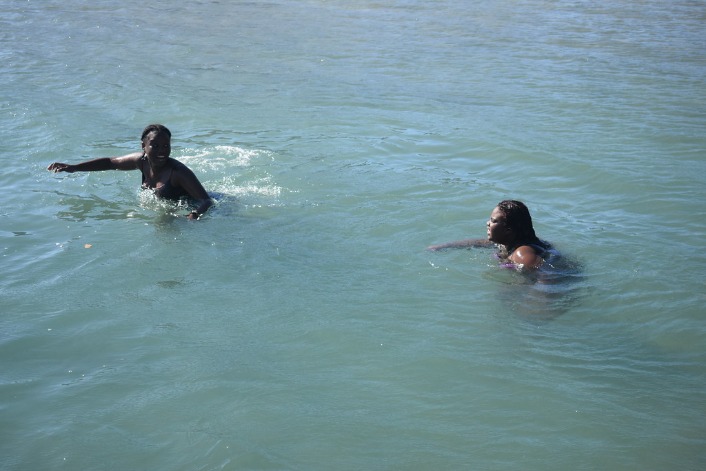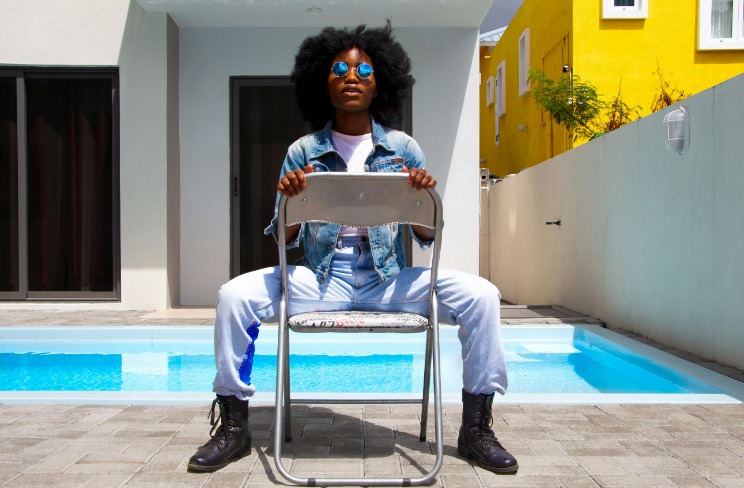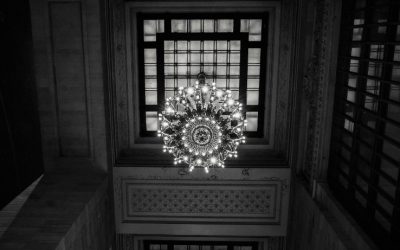Historical Influences on Mauritian Culture
The culture of Mauritius is a rich mosaic shaped by a diverse history of influences from various civilizations. Over centuries, indigenous traditions, African roots, European colonization, Indian migration, and Chinese contributions have blended to create a unique cultural identity. This cultural diversity is reflected in the island’s language, religion, festivals, and culinary traditions, making Mauritius a vibrant example of multicultural harmony.
Colonial Heritage and Its Impact
The culture of Mauritius is deeply influenced by its colonial heritage, which has left a lasting impact on the island’s language, traditions, and societal values. During the colonial period, primarily under French and British rule, diverse cultural elements were introduced and blended with indigenous practices. French colonization contributed to the prominence of the French language and the development of Creole culture, while British influence affected legal systems, education, and administrative structures. This diverse colonial past has fostered a multicultural society where different religions, cuisines, and festivals coexist harmoniously. The legacy of colonialism also shaped the island’s architecture, art, and social norms, creating a unique cultural identity that reflects a fusion of African, European, Asian, and indigenous influences. Overall, Mauritius’s colonial heritage plays a pivotal role in shaping its vibrant and diverse cultural landscape today.
African, Asian, and European Roots
The culture of Mauritius is a vibrant mosaic shaped by its rich history and diverse population, reflecting deep influences from African, Asian, and European roots. These cultural elements blend seamlessly to create a unique societal identity on the island, celebrated through language, traditions, and customs.
African influence is evident in the local music, dance, and oral storytelling traditions, which have been preserved and adapted over centuries. These African roots contribute to Mauritius’s lively festivals and communal practices that emphasize kinship and spiritual beliefs.
Asian heritage, particularly from India and China, has significantly impacted the island’s culinary practices, religious practices, and festivals. Hindu and Chinese New Year celebrations, alongside Indian music and dance forms, are integral parts of Mauritian culture, highlighting the Asian communities’ enduring traditions.
European influence, primarily from the French and British colonial periods, is reflected in the island’s language, legal systems, and architecture. French remains widely spoken, and colonial-era buildings continue to shape the island’s landscape, merging European sophistication with local customs.
Overall, the cultural tapestry of Mauritius exemplifies a harmonious integration of African warmth, Asian vibrancy, and European elegance, making it a truly multicultural society with a rich and diverse heritage.
Post-Independence Cultural Evolution
The culture of Mauritius is a rich tapestry woven from its diverse historical influences, including the legacy of colonial powers, indigenous traditions, and immigrant communities. French, British, African, Indian, and Chinese cultures have all contributed to shaping the island’s social fabric, cuisine, music, and religious practices. This multicultural heritage has fostered a unique national identity characterized by harmony and diversity.
Post-independence, Mauritius has experienced significant cultural evolution as the nation sought to forge a unified identity while embracing its pluralistic roots. Efforts to promote national unity are reflected in government policies supporting multiethnic celebrations, linguistic diversity, and cultural expressions. Contemporary Mauritius continues to evolve culturally by integrating modern influences with traditional practices, maintaining its status as a vibrant, multicultural society.
Language and Communication
Language and communication play a vital role in shaping the culture of Mauritius, a diverse island nation renowned for its multicultural heritage. The country’s rich linguistic landscape reflects its history of various influences, including African, Asian, European, and Middle Eastern cultures. Through spoken and written language, Mauritians express their traditions, beliefs, and social values, making language a key component of their vibrant cultural identity.
Official Languages and Multilingualism
Language and communication play a vital role in the rich cultural tapestry of Mauritius. With its diverse population, Mauritius has embraced multilingualism, where several languages coexist, facilitating daily interactions and cultural expression. Official languages in the country include English, which is used in government and legal contexts, and French, prevalent in media and education. Additionally, Mauritian Creole, a French-based creole language, is widely spoken among the locals and is considered a key aspect of national identity. The multilingual nature of Mauritius enhances cultural understanding and fosters a society that values linguistic diversity, reflecting the island’s history of multicultural influences. This linguistic variety not only supports effective communication but also enriches the cultural fabric of Mauritius, making it a unique example of multilingualism in the modern world.
Language Usage in Daily Life
Language and communication are essential aspects of the culture of Mauritius, reflecting its diverse heritage. The islanders primarily speak English and French, which are used in formal settings, education, and media. Creole, a blend of French, African, and Asian languages, is widely spoken in everyday conversations, serving as a symbol of national identity. Additionally, Bhojpuri and Hindi are commonly used within Indian communities, maintaining cultural traditions through language. In daily life, people switch between these languages depending on context, showcasing the multilingual and multicultural fabric of Mauritian society. This linguistic diversity facilitates effective communication and fosters a sense of unity amid cultural differences.
Role of Creole in Identity
The culture of Mauritius is deeply intertwined with its linguistic landscape, where language and communication play vital roles in shaping national identity. Creole, particularly Mauritian Creole, functions as a living symbol of the island’s diverse history and social fabric. It emerged from the blend of African, Malagasy, European, and Asian influences, serving as a unifying mode of communication among different communities. For many Mauritians, Creole is a core element of their cultural expression and identity, fostering a sense of belonging and cultural pride. Its use in everyday conversation, music, and local festivities reflects the island’s multicultural heritage and reinforces a shared sense of community. In the broader context of language and communication, Creole’s role extends beyond mere linguistic function; it represents resilience and the complex history of Mauritius, helping to preserve cultural uniqueness in a globalized world.
Religious Diversity and Practices
Religious diversity in Mauritius is a vibrant reflection of the island’s rich cultural heritage. The country is known for its harmonious coexistence of various faiths, including Hinduism, Christianity, Islam, and Buddhism. These diverse religious practices contribute significantly to the unique cultural identity of Mauritius, influencing its traditions, festivals, and daily life. Exploring the religious landscape of Mauritius offers a glimpse into how different beliefs and practices blend to create a society rooted in tolerance and mutual respect.
Hinduism and Temples
Religious diversity is a prominent feature of Mauritius’s vibrant culture, with Hinduism being one of the most widely practiced religions on the island. Hinduism in Mauritius has flourished over centuries, blending traditional beliefs with local customs to create a unique spiritual landscape. Temples play a vital role in the religious and social life of Mauritian Hindus, serving not only as places of worship but also as community centers for festivals, rituals, and cultural activities.
These temples are often intricately decorated and architecturally unique, reflecting a blend of Indian, colonial, and local influences. Major temples, such as the Grand Bassin and the Maheswarnath Temple, attract thousands of devotees and tourists alike, especially during important festivals like Maha Shivaratri and Diwali. The practice of puja (prayer rituals), offerings, and processions forms an integral part of everyday life and religious observance for Mauritian Hindus, preserving their ancient traditions while adapting to contemporary society.
Christianity and Celebrations
Religious diversity in Mauritius is a vibrant aspect of its cultural identity, reflecting a harmonious coexistence of various faiths and traditions. Christianity is one of the prominent religions on the island, practiced by a significant portion of the population. Christian communities in Mauritius observe numerous celebrations that are integral to their faith, including Christmas, Easter, and the Feast of Assumption. These festivities often involve special church services, family gatherings, and public events that showcase the island’s festive spirit. Cultural practices intertwined with Christianity also influence local customs, music, and cuisine, contributing to the diverse cultural mosaic of Mauritius. Overall, religious practices and Christian celebrations play a vital role in shaping the social fabric and cultural landscape of the island nation.
Islam and Community Activities
Religious diversity and practices in Mauritius reflect the country’s rich cultural tapestry, with Islam being an integral part of its multicultural identity. Muslim communities in Mauritius actively participate in various religious activities, including daily prayers, Ramadan celebrations, and Eid festivals, which foster a sense of unity and spiritual fulfillment. Community activities such as Islamic study groups, charitable events, and interfaith dialogues promote understanding and cooperation among different religious groups. These practices not only strengthen the faith of individual believers but also contribute to the overall harmony and social cohesion that characterizes Mauritian society.
Other Faiths and Spiritual Practices
Because of its rich history and multicultural population, Mauritius is a vibrant mosaic of religious diversity and spiritual practices. The island is home to a variety of faiths including Hinduism, Christianity, Islam, and Buddhism, each deeply embedded in the daily lives and cultural traditions of its people. Religious festivals such as Diwali, Christmas, Eid, and Chinese New Year are celebrated with enthusiasm and are integral to community bonding and cultural expression.
Besides major religions, Mauritius also sees the practice of traditional spiritual rituals and customs rooted in ancestral and indigenous beliefs. These practices often intertwine with mainstream religions, creating a unique spiritual landscape on the island. Temples, churches, mosques, and other sacred sites are not only places of worship but also centers for community gatherings and cultural preservation.
The diverse spiritual landscape of Mauritius fosters a culture of tolerance, mutual respect, and coexistence. This harmony among different faiths is reflected in the island’s social fabric, making Mauritius an exemplary model of religious acceptance and spiritual inclusiveness.
Festivals and Celebrations
Festivals and celebrations are vibrant expressions of the rich cultural heritage of Mauritius. They bring communities together to honor traditions, religious beliefs, and historical events through colorful parades, music, dance, and various festivities. These joyful occasions reflect the diverse influences that shape Mauritian society, making them an integral part of the island’s unique cultural identity.
Maha Shivaratri and Hindu Festivals
Festivals and celebrations hold a special place in the vibrant culture of Mauritius, reflecting its rich religious diversity and communal harmony. Among these, Maha Shivaratri is a significant Hindu festival dedicated to Lord Shiva, celebrated with devotion and enthusiasm by the Hindu community on the 14th night of the lunar month. Devotees fast, perform night-long prayers, and offer special prayers at Shiva temples, emphasizing spiritual purification and divine blessing.
Hindu festivals are an integral part of Mauritian culture, showcasing colorful processions, traditional music, dance, and rituals. Celebrations such as Diwali, Ganesh Chaturthi, and Holi are marked with great fervor, bringing communities together to embrace their religious heritage. These festivals not only strengthen spiritual bonds but also serve as vibrant social events that promote unity and cultural identity across the island.
Cultural and National Celebrations
Festivals and celebrations are an essential part of the rich cultural heritage of Mauritius, reflecting the diverse ethnic and religious backgrounds of its people. These events foster community spirit, honor traditions, and showcase the unique blend of cultures on the island.
- Hindu festivals such as Diwali and Maha Shivratri are widely celebrated, featuring vibrant rituals, decorating homes with lights, and sharing sweets.
- Christian festivities like Christmas and Easter are also significant, with church services, decorations, and family gatherings playing a central role.
- Muslim celebrations such as Eid-ul-Fitr and Eid-ul-Adha are marked by prayers, feasts, and charitable activities.
- Cultural events like Cavadee, a Tamil festival, involve processions, piercing rituals, and traditional music and dance.
- National celebrations such as Independence Day on March 12th commemorate Mauritius’s independence from British rule with parades, speeches, and cultural performances.
These festivals and celebrations highlight the harmonious coexistence of different cultures in Mauritius and serve as a testament to the country’s vibrant and inclusive society.
Music, Dance, and Artistic Events
The culture of Mauritius is a vibrant blend of diverse traditions and customs, reflected vividly through its festivals, celebrations, music, dance, and artistic events. These cultural expressions showcase the island’s rich multicultural heritage, which includes influences from Indian, African, Chinese, French, and Creole communities. Major festivals such as Diwali, Chinese New Year, Maha Shivratri, and Eid are celebrated with enthusiasm, bringing communities together in colorful displays of faith and unity. Music plays a vital role in Mauritian culture, with genres like sega, sega tinne, and folk songs capturing the island’s lively spirit and historical roots. Dancing is an integral part of celebrations, with sega dance being the most iconic, characterized by rhythmic movements that tell stories of the island’s plantation past. Artistic events, including traditional craft fairs, dance festivals, and theatrical performances, highlight the creativity and heritage of the Mauritian people. These cultural festivities and artistic expressions not only preserve the island’s history but also foster a deep sense of community and pride among its inhabitants.
Music, Dance, and Artistic Expressions
Music, dance, and artistic expressions are vibrant and essential elements of Mauritius’ rich cultural heritage. These creative forms serve as a reflection of the island’s diverse history, blending influences from Africa, Asia, Europe, and the indigenous communities. They play a vital role in celebrating traditions, fostering community spirit, and preserving the unique identity of the Mauritian people.
Traditional Mauritian Music Styles
Music, dance, and artistic expressions are vibrant and essential components of Mauritian culture, reflecting the island’s rich history and diverse influences. Traditional Mauritian music styles such as Sega and Maloya are deeply rooted in the island’s African, Malagasy, European, and Asian heritage, creating a unique blend of rhythms and melodies. Sega, often characterized by its lively percussion, call-and-response vocals, and rhythmic guitar, is a social and festive expression that is performed during celebrations and gatherings. Maloya, with origins in slaves’ spiritual and cultural practices, features rhythmic drum beats, chanting, and dance movements that convey historical stories and collective memories. Artistic expressions in Mauritius extend to colorful dance forms, intricate crafts, and visual arts that showcase the island’s multicultural identity. These cultural elements serve to preserve and celebrate the history, struggles, and joys of the Mauritian people, fostering a strong sense of community and national pride.
Dance Forms and Cultural Significance
The culture of Mauritius is rich and diverse, reflected vividly through its music, dance, and artistic expressions. These art forms serve as a bridge connecting the island’s multicultural heritage, including influences from African, Indian, European, and Chinese communities. Music such as Sega and Bhojpuri songs are integral to Mauritian festivities, often characterized by lively rhythms and soulful melodies that resonate deeply with the local people. Dance forms like Sega, which combines music and dance to narrate stories of love, hardship, and celebration, are vital cultural expressions cherished by Mauritians. These dance forms not only entertain but also preserve historical narratives and social values, fostering a community spirit. Overall, the artistic expressions in Mauritius encapsulate the island’s multicultural identity, fostering unity and cultural pride among its inhabitants.
Contemporary Arts and Crafts
The culture of Mauritius is a vibrant tapestry woven from diverse influences, reflecting the island’s rich history of migrations, colonization, and cultural exchanges. Music, dance, and artistic expressions hold a special place in the daily life and celebrations of Mauritians, showcasing their unique identity and heritage.
In terms of contemporary arts and crafts, Mauritius has developed a dynamic scene that combines traditional techniques with modern creativity. Artisans craft intricate jewelry, textiles, and woodwork that highlight the island’s natural resources and cultural stories. Contemporary artists often explore themes of identity, nature, and social issues through paintings, sculptures, and multimedia installations, gaining recognition both locally and internationally.
- Music in Mauritius is characterized by sega, a lively genre that features rhythmic drums, guitar, and traditional instruments, often performed during festivals and social gatherings.
- Dance forms such as sega and accused dances are integral to celebrating cultural events, showcasing energetic movements and storytelling through dance.
- Visual arts include vibrant paintings and crafts that depict everyday life, folklore, and historical scenes, blending African, European, Indian, and Chinese influences.
- Contemporary arts and crafts are marked by the innovative use of local materials to produce modern interpretations of traditional motifs, fostering a sense of pride and national identity.
- Popular artistic expressions often emphasize themes of harmony, multiculturalism, and the natural beauty of Mauritius, inspiring both local communities and international audiences.
Cuisine and Culinary Heritage
Mauritius boasts a rich culinary heritage that reflects its diverse cultural influences, including African, Indian, Chinese, and European traditions. The island’s cuisine showcases an array of flavorful dishes, vibrant spices, and unique cooking techniques that have been passed down through generations. This culinary mosaic not only satisfies the palate but also offers a glimpse into the island’s vibrant history and multicultural society.
Influences from Asia, Africa, and Europe
The culture of Mauritius is a rich tapestry woven from the diverse influences of Asian, African, and European culinary traditions. Mauritian cuisine is renowned for its vibrant flavors and use of a wide variety of spices, herbs, and local ingredients that reflect its multicultural heritage. Asian influences, particularly from India and China, introduce dishes such as curry, roti, and noodle-based recipes, alongside the use of spices like turmeric and cumin. African elements are evident in the incorporation of flavors from Madagascar and the mainland, often featuring ingredients like plantains and seafood. European influences, especially from France and Britain, add culinary nuances through baked goods, dairy products, and methods of preparation that have been integrated into everyday meals. Overall, Mauritian cuisine is a celebration of the island’s historical interactions and cultural diversity, creating a unique culinary identity that is both flavorful and multifaceted.
Popular Dishes and Food Customs
The culture of Mauritius is a vibrant tapestry woven from diverse influences, reflected strongly in its cuisine and culinary heritage. Mauritian cuisine is a delightful blend of Asian, African, French, and Creole flavors, creating a unique gastronomic experience that showcases the island’s multicultural background. Popular dishes such as curry, seafood, and rice-based meals are staples, often prepared with aromatic spices and fresh ingredients. Certain foods, like dholl puri, samosas, and faratas, are enjoyed during special occasions and everyday meals alike.
Food customs in Mauritius emphasize communal eating and hospitality. Sharing meals is a significant aspect of social life, with families and friends gathering to enjoy hearty dishes together. Traditional cooking methods, including grilling, stewing, and frying, are still prevalent, maintaining the authenticity of recipes passed down through generations. Festivals and religious celebrations often feature specific traditional foods, highlighting the importance of culinary heritage in reinforcing cultural identity and fostering a sense of community on the island.
Food Festivals and Gastronomic Traditions
The cuisine and culinary heritage of Mauritius reflect a rich tapestry of influences from Africa, Asia, Europe, and the islands themselves. This diverse cultural background has cultivated a vibrant food scene that celebrates flavors, ingredients, and cooking techniques from various traditions. Food is an integral part of Mauritian social life, often bringing communities together during festivals and family gatherings.
- Traditional Mauritian dishes include rougaille (spicy tomato-based sauce), farata (flatbread), and dholl puri (pancake filled with yellow split peas).
- The island is famous for its curries, which are often made with chicken, fish, or vegetables, flavored with local spices and coconut milk.
- Seafood plays a vital role, with dishes like grilled fish and octopus salad being popular coastal specialties.
- Diverse influences are also evident in street foods, with vendors offering samosas, gato tors (sweet pastries), and spicy chutneys.
- Food festivals in Mauritius showcase its culinary heritage, such as the Mauritian Food Festival, which celebrates local flavors and traditional cooking methods.
- The Cavadee festival features elaborate offerings and shared feasts, highlighting the importance of culinary traditions in religious celebrations.
- During Diwali, a major Hindu festival, sweets like ladoos, barfis, and other treats are prepared, emphasizing the island’s cultural diversity.
- Le Morne Cultural Festival and other local events often include traditional music, dance, and culinary demonstrations that preserve and promote the island’s gastronomic customs.
Traditional Clothing and Personal Expressions
Traditional clothing in Mauritius serves as a vibrant reflection of the island’s rich cultural diversity. It highlights the unique blend of influences from Indian, African, European, and Chinese communities that have shaped the nation’s history. Personal expressions through clothing are an important way for people to celebrate their heritage, customs, and identity, showcasing the colorful tapestry of Mauritian culture.
Attire for Festivals and Ceremonies
Traditional clothing and personal expressions play a significant role in the rich cultural tapestry of Mauritius. The island’s diverse population, including Hindus, Muslims, Creoles, and Chinese communities, has contributed to a vibrant array of attire that reflects their unique identities and heritage. During festivals and ceremonies, people often wear traditional garments that symbolize their cultural roots, fostering a sense of pride and unity.
For example, during Diwali, Hindus adorn themselves in colorful sarees and dhotis, often decorated with intricate embroidery and jewelry. Muslim celebrations see men wearing kurta-pajamas and women in modest, beautifully embroidered dresses. Creole festivities might feature more casual yet expressive clothing, showcasing the island’s relaxed and inclusive culture. Chinese New Year celebrations are marked by the wearing of bright qipao dresses and traditional suits, emphasizing the importance of heritage in personal expressions.
Attire for festivals and ceremonies in Mauritius not only serves as a visual representation of cultural identity but also preserves age-old customs and practices. These traditional outfits are frequently complemented with ornaments, accessories, and ceremonial props, enhancing the festive atmosphere. Overall, traditional clothing and personal expressions in Mauritius exemplify the island’s multicultural identity and collective celebration of its diverse origins.
Modern Adaptations of Traditional Clothing
The culture of Mauritius is rich and diverse, reflected vividly through its traditional clothing and personal expressions. Traditional attire often showcases the country’s blend of African, Asian, and European influences, with garments like the saree, lehenga, and kurta being prominent during cultural festivals and celebrations. These clothing styles serve as a cultural emblem, embodying the history and identity of different communities on the island.
Modern adaptations of traditional clothing in Mauritius often incorporate contemporary fabrics, designs, and influences, making them suitable for everyday wear while maintaining cultural significance. Many people merge traditional elements with modern fashion to express their heritage in a stylish and personalized way. This blending of old and new allows Mauritians to celebrate their cultural roots while embracing global fashion trends, fostering a vibrant and inclusive cultural identity.
Social Customs and Community Life
The culture of Mauritius is vibrant and diverse, shaped by a rich tapestry of social customs and community traditions. These customs reflect the island’s multicultural heritage, bringing together influences from African, Indian, Chinese, and European sources. Community life in Mauritius is characterized by lively festivals, family-centered activities, and respectful social interactions that strengthen the bonds among its people. Together, these elements create a unique and harmonious social environment that celebrates unity and cultural identity.
Family and Social Structures
The culture of Mauritius is deeply rooted in its diverse social customs and vibrant community life, reflecting a blend of African, Indian, European, and Chinese influences. Family ties are highly valued, and respect for elders is an important tradition that reinforces strong social bonds within communities.
In Mauritian society, communal festivals and celebrations play a significant role in bringing people together. Events such as Diwali, Chinese New Year, and Christmas are celebrated with enthusiasm, showcasing the island’s multicultural environment. These festivities foster unity and reinforce the importance of community cohesion.
Social structures in Mauritius are often organized around extended families, which serve as the primary support network. Arranged marriages are still customary in some communities, emphasizing familial and cultural values. Education and social status contribute to the structure of society, but traditional respect and hospitality remain universal gestures of Mauritian culture.

Overall, social customs and community life in Mauritius highlight its harmonious coexistence of diverse cultures, fostering a sense of belonging and shared identity among its people.
Rites of Passage and Celebrations
The culture of Mauritius is rich and diverse, shaped by a blend of African, Asian, European, and Creole influences. Social customs and community life play a vital role in maintaining the island’s harmonious and vibrant society. People frequently gather for communal events, fostering strong bonds among neighbors and families. Rites of passage are significant milestones celebrated with traditional ceremonies, such as baptisms, weddings, and coming-of-age rituals, often marked by rituals and lively festivities. Celebrations in Mauritius are colorful and spirited, reflecting the multicultural heritage of the island. Festivals like Diwali, Chinese New Year, Eid, and Cavadee are observed with enthusiasm, incorporating traditional music, dance, and culinary delights, which showcase the unity in diversity that defines Mauritian culture.
Community Celebrations and Gatherings
The culture of Mauritius is rich and diverse, shaped by a blend of African, Asian, European, and Middle Eastern influences. Social customs and community life play a vital role in maintaining the cultural identity of the island’s people. Traditional practices and ways of life are often celebrated through various community gatherings and local events that foster unity and cultural pride.
Community celebrations and gatherings in Mauritius are vibrant occasions that bring people together to honor religious festivals, national holidays, and cultural milestones. Events such as Diwali, Chinese New Year, Eid, and the Gnaoua Festival are celebrated with enthusiasm, featuring music, dance, food, and rituals that reflect the multicultural heritage of the island. These gatherings serve to strengthen social bonds and promote mutual respect among different communities.
In addition to religious festivals, locals often participate in communal activities such as sega dance nights, street fairs, and traditional markets, which provide opportunities for social interaction and cultural expression. Hospitality and togetherness are central to Mauritian community life, where sharing meals and stories enhances bonds among neighbors and extended family members. Through these customs and celebrations, the people of Mauritius continue to preserve their diverse cultural legacy while fostering a sense of belonging and community resilience.
Values and Social Norms
Values and social norms play a crucial role in shaping the culture of Mauritius. These elements reflect the collective beliefs, customs, and behaviors that are accepted and practiced by the people. In Mauritius, a diverse island nation, values such as respect, community, and harmony are deeply rooted in everyday life, influencing how individuals interact and coexist. Understanding these social norms provides insight into the unique cultural fabric of the island and its rich multicultural heritage.
Respect and Hospitality
The culture of Mauritius is deeply rooted in its diverse society, where values and social norms play a crucial role in shaping everyday life. Respect for elders and authority is highly emphasized, fostering a harmonious community. Social norms encourage politeness, communal sharing, and maintaining good relationships among neighbors and friends. Hospitality is a cornerstone of Mauritian culture, with people welcoming visitors warmly and graciously, often offering food and assistance as a sign of friendship and goodwill. This spirit of openness and regard for others contributes significantly to the island’s vibrant and inclusive cultural identity.
Education and Cultural Preservation
The culture of Mauritius is a vibrant tapestry woven from diverse values, social norms, educational influences, and efforts to preserve its rich heritage. These elements collectively shape the daily lives and identity of Mauritians, reflecting the island’s multicultural history and dynamic society.
- Values and Social Norms: Mauritians cherish values like tolerance, respect, and community spirit. Social norms emphasize hospitality, harmony among different ethnic groups, and the importance of family bonds. These practices foster social cohesion and mutual understanding on the island.
- Education: Education plays a crucial role in transmitting cultural values and promoting multicultural awareness. Schools integrate lessons on local history, languages, and traditions, ensuring that younger generations appreciate their diverse heritage.
- Cultural Preservation: Mauritius actively maintains its cultural heritage through festivals, traditional music, dance, and crafts. Initiatives by government and communities aim to preserve languages like Creole, Bhojpuri, and French, as well as religious practices and culinary traditions, ensuring they remain vibrant for future generations.





0 Comments